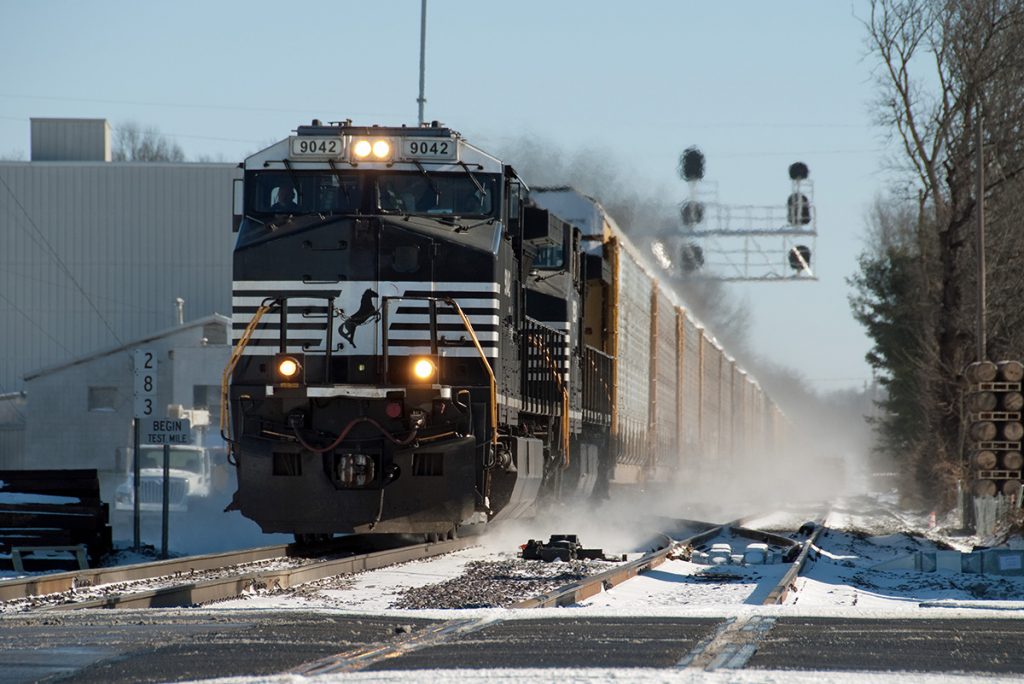
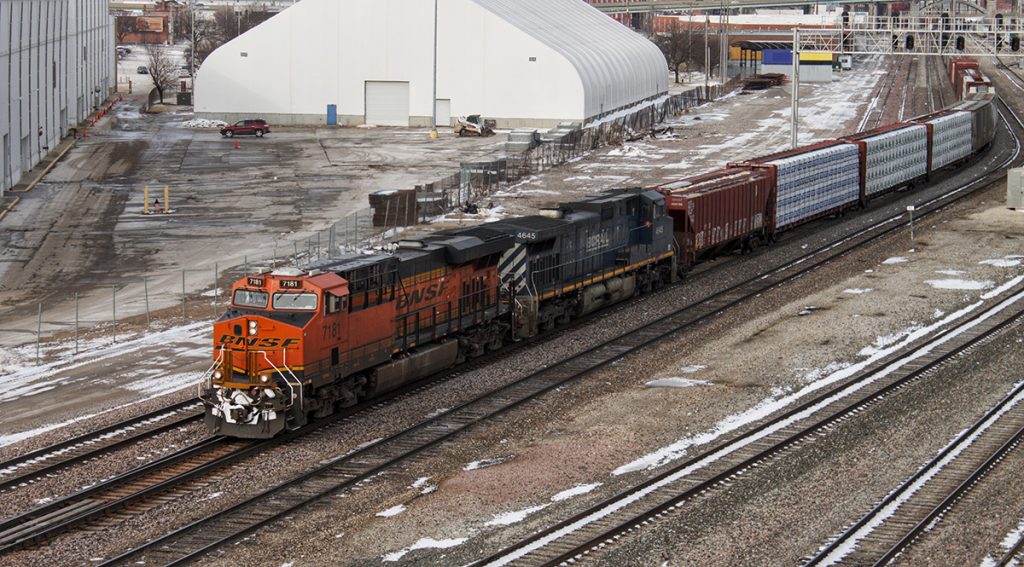
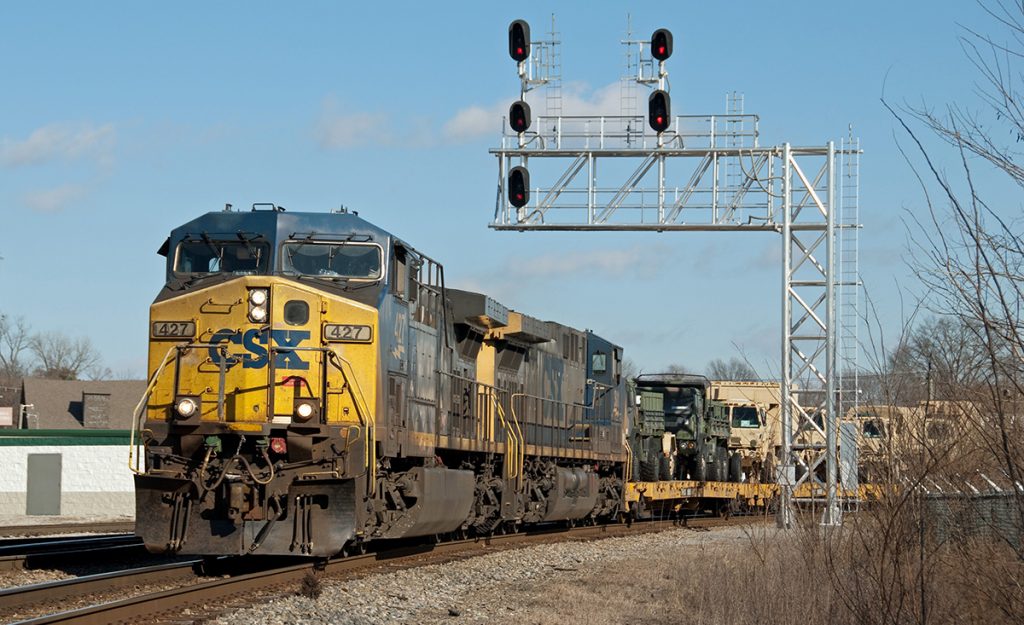
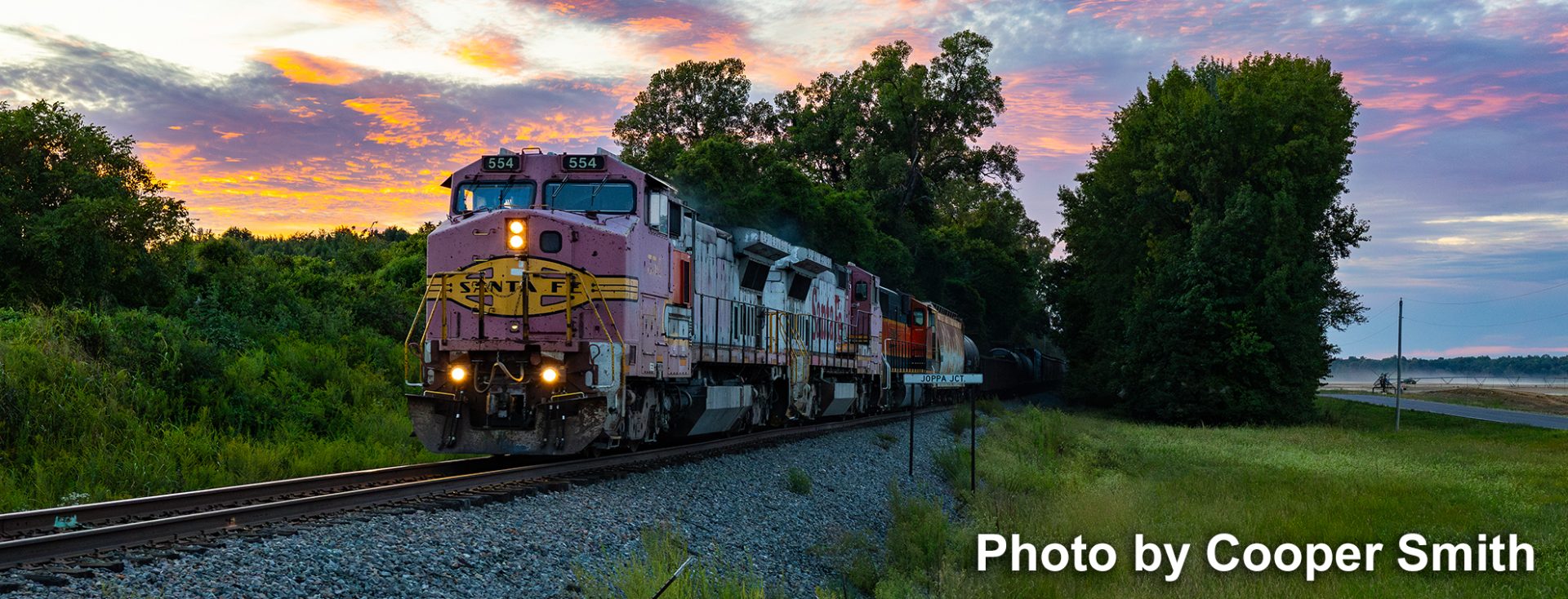



Before we got used to the jumbo covered hopper cars so prevalent now, grain was shipped in a common 40’ boxcar. In the early days grain was shipped by the sack. Bulk grain shipment by rail required the use of a temporary grain door secured inside the doorway. In the picture to the left, the wooden door has been removed and the men are manually shoving product out the door.
In the other picture, a loaded boxcar is being mechanically tilted and tipped to completely off-loading the product. The car was secured firmly, then raised to about a 45-degree slope, and tipped side-to-side. The car is lowered and the process is repeated as the other end is lifted. This time the car will be tilted before it is raised in hopes of the product not refilling the far end of the car. The whole process was fairly swift, as I recall watching at the Port-of-Tacoma back in the 50s, probably five minutes total. With all those fancy dressers observing behind the protective glass, , and there are no other cars lined up, this appears to be a demo.
Back at the grain elevator before loading, the grain door was secured and heavy paper lining was applied generously to all surfaces. When loading is complete, the regular sliding steel door could scoot past the temporary grain door and be secured. More than one loaded grain car arrived nearly empty, days later after bumping along over the clickety-clack. Such happenstance kept railroad claims adjusters busy. Even one tiny break in the paper, in the wrong place, with tons of pressure, for a week or more, could wreak havoc. Pigeons and others loved it.
Grain doors only went a little more than halfway up the boxcar door opening, varying some due to the weight and density of the product. Corn, soy beans, and rice received the same treatment.
Reportedly, the very last grain-filled boxcars left the elevators in western Oklahoma in the Spring of 1978. The Missouri-Kansas-Texas Railroad, better known as the “KATY” did the honors. Why was it called KATY, you ask? Because the KATY’s New York Stock Exchange ticker-tape symbol was “KT”.
Credits: photos from the Oregon Historical Society, as seen in the Union Pacific Railroad Historical Society’s Streamliner Fall 2011 issue.
Submitted by Gary Ostlund
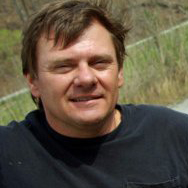
Greetings fellow NRHS Western Kentucky Chapter members. And welcome to January, 2019. My oh my what are year 2018 was. Looking back we had the Christmas show at the mall, breakfast with Santa, an excellent Christmas dinner at the Miller residence, a picnic and rail fan day at Crofton, a railfan day in Hopkinsville, a meeting in Hopkinsville, a track side day in Morton’s Gap not to mention numerous meetings, impromptu get-togethers and programs a plenty. I feel 2019 will be even better.
As you are aware, we did not have a business meeting in December however, we did have the aforementioned dinner at the Miller residence, a very successful breakfast with Santa and a successful Christmas show at the mall. Bill Farrell will have a report on the earnings from those events. Not to mention the raffle which netted us additional monies as the winner did not take the train set.
We did however have a meeting in November. Which also brought about elections of officers for 2019. There were no changes in officers as all were voted in by a single vote of acclamation. To which I say thank you. Hopefully I can serve as President as need be.
2018 also brought on a few new members. It is nice to think that we can continue to grow in this age of electronics and instant gratification. As for growing in 2019, I have always said, if a member has an idea bring it forward. We will entertain all thoughts of growth and events as well. If there is something you would like for the Chapter to do, sponsor it. And it will be done!
As is customary in January, the president which is I, will have the program and refreshments. My program will be a 1984 VHS video of Chesapeake and Ohio 4-8-4 number is 614 pulling coal trains in the mountains of Virginia and West Virginia. Along with the video we will have a guest speaker. If you recall a few years ago my oldest stepson Brian Davis who works for CSX as a conductor gave us a talk. Brian is on call meeting night and if he is not on the railroad he will be at the meeting to give us a follow-up to that program. That is tentative provided he is available at the time.
They extended forecast for meeting night is clear and cold. Keep in mind should we have inclement weather I will cancel the meeting. No need for anyone to get out slip and fall or worse. Otherwise I hope to see you Monday, January 21, 2019. Bring a friend as all are welcome. – Ricky Bivins, Chapter President
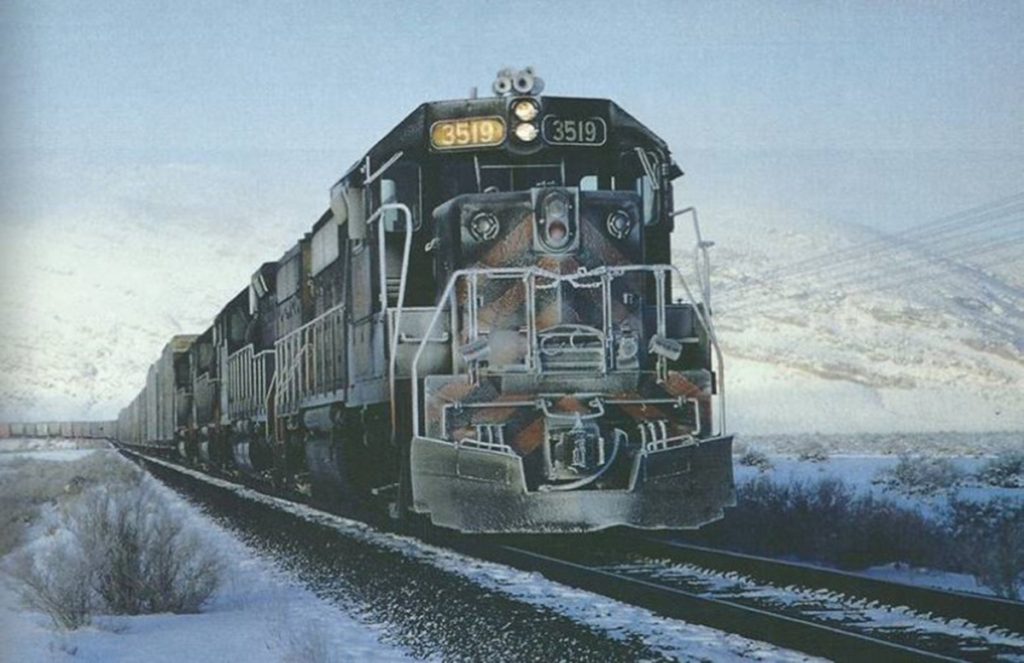
Stopped for a red signal at Jungo, Nevada., one morning in December 1972, Western Pacific train GGM (for Golden Gate Merchandise) presents a Christmas Card-perfect image with hoarfrost coating the lead unit.
Credits: Photo and quote by Norman W. Holmes as seen in TRAINS 100 Greatest Railroad Photos
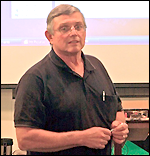
By Rich Hane
My dear Uncle Joe married my Mom’s sister in 1937. He soon went to work for the Santa Fe Railroad at the giant Corwith Yard on the near southwest side of Chicago as a mechanic. Corwith was built in 1887 by the Santa Fe and at the time was the largest railroad yard in the world. He always said that it was a good company to work for and the economic Depression was just starting to loosen its grip on the nation.
He was what I would call a general mechanic doing whatever was needed and worked on all manner of engines, freight cars, and passenger cars. He disliked working on the large numbers of stock cars which came in to deliver animals to the nearby Chicago stockyards. Things got real busy starting a year or two before World War II as the country started the huge buildup needed to arm the military and the civilian economies. He was a bit too old to go into the service and his railroad job might have exempted him. One of the interesting things that he did during the war was to ride on some of the passenger trains as an emergency mechanic to repair the train on its way to Fort Madison, Iowa. The trains were on a tight schedule and it was important to minimize any problems that might delay or tie up the main line west. Fort Madison was a division point on the Santa Fe just west of the Mississippi River about 240 miles from Chicago. The trains carried a supply of spare parts and tools in the baggage car that the mechanic could use to hopefully keep the train running. He would spend the night in Fort Madison and then do the same job on the return trip to Chicago.
Uncle Joe said that the number of trains coming and going was just unbelievable and everyone was so busy. He occasionally had to sleep overnight at the yard when things were really busy. One interesting side story was that whenever the mechanics and laborers had some free time they would assemble freight car kits that came in to the yard from some other company. These were shipped with all of the parts needed to construct a finished freight car.
When the war was finally over he worked about another year before he was laid off to make room for the GIs who were former employees that were returning home and that the Santa Fe had promised to rehire when they came home after saving the world (my well founded opinion).
Uncle Joe then became a chicken farmer for 3 years before almost going broke and followed this with jobs at General Electric and Sylvania. Later, I will write about him and me and some model trains.
Work continues on NC&StL 576 at the Nashville & Western facility in Nashville, Tennessee. Following the 576 in the January PennyRail, I wanted to include some photos of the beginning stages of restoration as seen below. You can see printed details of the work on the Steam Nashville Facebook page. Simply search “Steam Nashville” in your Facebook search window. – Bill Thomas